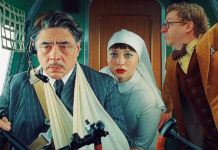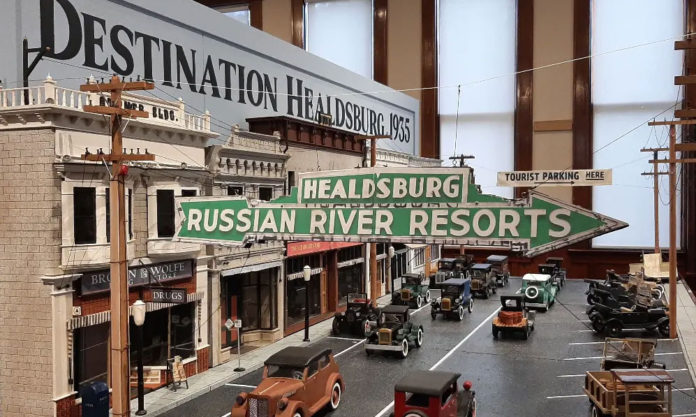
The past comes to life, albeit on a reduced scale, at the Healdsburg Museum this week with the new exhibit “Modeling Healdsburg: Creations of a Master Woodworker.” It is a collection of replicas, micro-sculptures and reconstructions by woodworker Jon Lacaillade, who for past museum exhibits has provided model street scenes, railroad bridges and historic houses from Healdsburg’s heyday.
Now he’s been given full rein by museum Executive Director Holly Hoods, who knows talent when she sees it. He started volunteering at the museum doing odd jobs and solving long-standing problems, but it soon became clear that Lacaillade had more to offer than just a handyman’s skills.
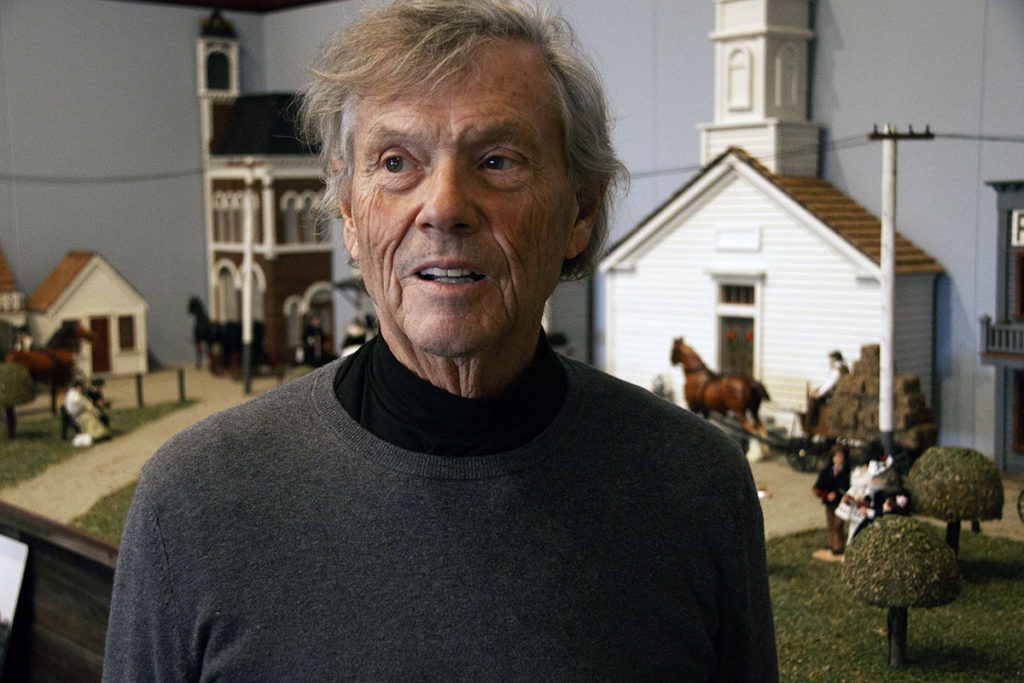
His amazing recreations of historic artifacts and periods fills the museum with living miniatures of eras gone by. Using recycled and found materials, and combining his woodworker’s eye and natural attention to detail, Lacaillade creates a strange voiceless reality, too big to be a toy and too small to be real—but not by much.
The exhibit’s most familiar work may be the “Destination Healdsburg, 1935,” diorama, showing a busy West Street (now Healdsburg Avenue) filled with clothing emporia, drug stores and a dozen miniature cars backed up in front of the shops across from the Plaza. Nearly every parking space and the street itself is filled with replica pick-up trucks with wood bed rails, town cars or sedans. A large green neon sign points the way east to the Russian River Resorts, toward Fitch Mountain, Camp Rose and Palomar.
It represents a time nine decades ago when the city actively encouraged tourism, going so far as to set aside a lot away from the plaza for locals to park, thus freeing up the valuable downtown spaces for commercial visitors.
The More Things Change
While that all rings a bell with today’s business climate, it served a different purpose then. “Healdsburg wanted tourists as potential residents to make up for population loss,” Hoods said. Healdsburg’s population had dropped to only 2,296, having lost almost 5% in recent years. The hope was that tourists would like the town so much they’d make it their home.
“It’s a snapshot in time of one of Healdsburg’s major tourist eras,” Hoods said. Museum visitors will find the snapshot eerily familiar in many ways to the photo op that the Plaza now presents.
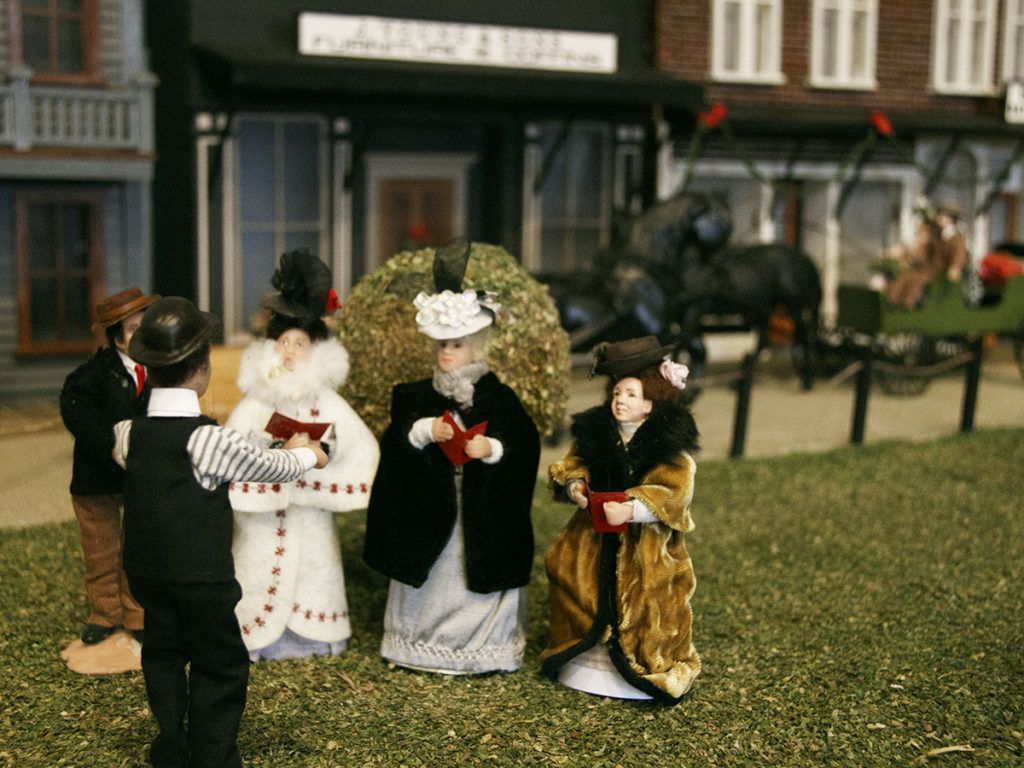
Although the downscaled scenes of Matheson Street in 1935, and another from 1893, are compelling in their own right, it’s the little things that count: the individual faces on the six-inch inhabitants of the town created by Maggie Bates, the white-walled tires of the pricier cars, the paint palette of a pre-Kodachrome era.
The replicas are handcrafted by Lacaillade at his Tucker Street workshop, reduced in scale with an eerie accuracy. A former resident of the historic whaling town of Nantucket (ironically, the birthplace of Henry Delano Fitch), Laraillade and his partner Pam Vana-Paxhia moved to Healdsburg in 2007 and became volunteers at the museum, and the rest, as they say, is history.
Soon, the former restoration contractor focused his attention on revealing Healdsburg’s own historic past by contributing models and replicas to exhibits already in the works. This exhibit, Modeling Healdsburg, puts those contributions center stage.
Master Woodworker
Lacaillade, now 73, works three hours every morning on his construction projects, working from historic photos and newspapers in the museum collection and other sources to craft his architectural models. Before moving to California he and his wife spent 18 years on the island of Nantucket where he managed a construction company specializing in historic renovations.
They are both now busy museum volunteers, and she a master gardener. His long career in carpentry in the historic town of Nantucket, center of the 19th century whaling industry immortalized in Moby Dick, gives him an almost superhuman ability to recreate the past through its physical manifestations.
In the afternoons he rides his bike, and a sizable section of the new exhibit explores this other obsession of his, transportation. A life-size wood horseless carriage, a replica of the first car to come to Healdsburg in 1900, commands the entrance of the 221 Matheson St. museum.
It’s accurate down to the smallest detail, even the nuts and bolts made of carved wood. It was Laraillade’s “COVID project,” a complex task he undertook when the pandemic forced everyone to shelter in place and find something to do with their time.
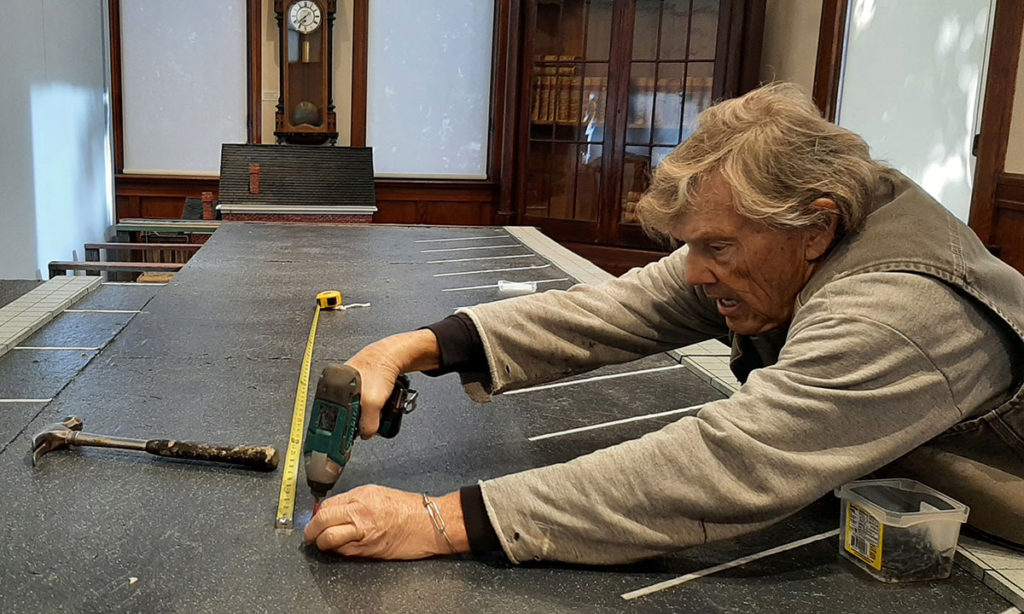
A full stage of other bike models is on display to the left, a series of two-wheelers whose spindly frames are recreated in laminated wine-barrel slats and whittled oak. A couple of the bikes are of the “penny-farthing” or high wheeler style, with the larger wheel at the front and a small one at the rear. There’s also the short-lived inverse of that, a “flying arrow” bike with a pie-pan-sized front wheel, the larger wheel at the rear; and finally the “safety bike” with even-sized wheels as we have today.
In the Details
The detail in these recreations, as in everything in the exhibit, is staggering. Even the bike bells are hand-carved and sanded oak, and look real enough to ring.
Other exhibits on the museum’s top floor, formerly the city’s Carnegie Library, include a stately model of Sotoyome Rancho, originally one of the first settler homes in the region and eventually an ornate mansion called Fitch’s Castle that burned to the ground in 1913.
Next to it sits the sturdy brick saltbox-style building at 424 Matheson, where Healdsburg’s first Black family lived in the early 20th century. This house was a feature of this year’s previous exhibit on African American histories in rural California. That closed in October, and the past two months have been spent crafting and staging Modeling Healdsburg.
The exhibit is a testament and showcase not only of Healdsburg’s history but of Lacaillade’s unique ability to make that history come to life. The end result is a remarkable time machine with the power to transport a museum-goer of today into another time and another Healdsburg; one that bears a haunting resemblance to our own.
‘Modeling Healdsburg’ opens on Dec. 14 and runs through April, 2024. Museum hours are 11am to 4pm, Thursday through Sunday.


